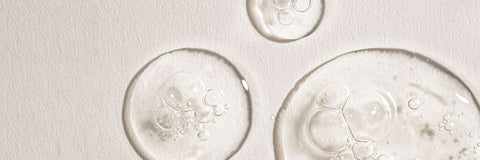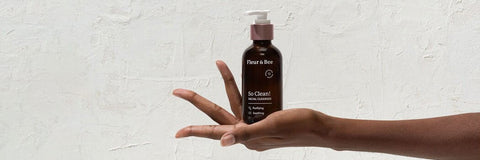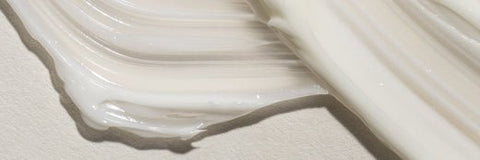The term “chemical peel” sounds pretty scary; and yet, many skincare aficionados have them done all the time. So, what are chemical peels? What do chemical peels do? Are chemical peels safe? There are many common questions surrounding chemical peels. That is why, in this article, we’re discussing those questions, and more. If you’ve ever wondered if you should get a chemical peel, this is a must-read article.
IN A NUTSHELL
Main Takeaways: Chemical peels are considered completely safe, as long as they’re done by a professional and all aftercare instructions are followed.
Good to Know: The type and level of chemical peel you get should be based on what you’re trying to accomplish.
Recommended Products: H2 Oh Yeah Hydrating Moisturizer (but check with your professional about when to start using it after a peel).
What Is a Chemical Peel?
Generally speaking, a chemical peel is a process in which the top layer of the skin is essentially removed (or peeled off) using a chemical application. Different peels use different chemical solutions and offer varying results. The goal is to improve the appearance of existing skin and/or to allow new, healthy skin to grow back in its place. The exact way a chemical peel is performed depends on where you get it done and what kind of peel you’re getting.
Benefits of a Chemical Peel
As you can imagine, there are a myriad of benefits to a chemical peel. Here are just a few:
- Chemical peels reduce or diminish dark spots - By peeling off the outer layers of skin, a chemical peel can reduce the appearance of dark spots .
- Chemical peels remove or diminish the appearance of fine lines and wrinkles - A chemical peel essentially reveals new, younger-looking skin with fewer fine lines and wrinkles than the existing top layer of skin.
- Chemical peels smooth the skin - Since a chemical peel takes away at least the top layer of skin, it takes with it damaged skin that can be uneven in texture.
- Chemical peels remove skin precancerous growths - As we’ll see later, this kind of chemical peel refers to peels that go deep, rather than surface-level peels, and are typically doctor-ordered as a medical treatment.
What Kinds of Chemical Peels Are There?
There are three different basic levels of a chemical peel:
A Surface Chemical Peel (or Level 1 Peel)
This is the kind you can have done in a spa. A surface peel basically exfoliates the top layer of skin, revealing new skin and reducing the appearance of fine lines and wrinkles and dark spots. The recovery time from this kind of chemical peel is almost nil and usually uses a mild acid like an alpha-hydroxy acid. A level 1 chemical peel can be repeated every month or so.
A Medium Chemical Peel (or Level 2 Peel)
The next level up, a medium chemical peel not only takes off the top layer of skin, but part of the dermis or middle layer of skin. The acid used here is usually stronger (like glycolic acid), and recovery time is usually longer–around a couple of days to a week. For that reason, a Level 2 chemical peel is recommended only every few months. This is also something you might have done in a spa setting.
A Deep Chemical Peel (or Level 3 Peel)
The highest and deepest level of chemical peels, a Level 3 goes down to the middle layer of skin. If you have precancerous growth, this is probably the level peel your doctor will recommend, but it also helps with reducing fine lines and wrinkles and dark spots. Since this process is so intense and uses stronger chemicals (like trichloroacetic acid), it’s typically only recommended every few years. However, there are some who feel a Level 3 peel is a once-in-a-lifetime procedure. Not surprisingly, the downtime for a Level 3 peel is at least a few weeks for most.
Are Chemical Peels Safe?
Although chemical peels are considered safe, it’s vitally important that it is performed by a seasoned professional. A chemical peel should be treated like a medical procedure. Do your homework, follow the directions for aftercare given to you by your esthetician, nurse, or doctor, and make sure that you are getting your chemical peel done by someone with a proven track record who has been well trained in the process of chemical peels. A medical spa or a doctor’s office are your best bets. Whatever you do, be sure to consult with your doctor or the med spa about the right kind of chemical peel for you and your skincare goals.
What You Need To Know if You’re Going To Have a Chemical Peel
As we mentioned above, chemical peels are safe, but you do need to know a few things ahead of time. You also need to be willing to follow the instructions your doctor or spa lays out for you to the letter; otherwise, you could do some real damage to your skin. Here are just a few things you need to know if you have a chemical peel (and remember–this is in addition to your doctor’s advice–not instead of it):
- Avoid a chemical peel under certain circumstances - For most people, a chemical peel is completely safe; but for others who may be pregnant or have certain medical conditions, it’s a bad idea. Before you sign up for any kind of peel, talk to your doctor or qualified professional about whether it’s OK for you to have one.
- Use a good SPF afterwards - Frankly, you should be doing this anyway, but it’s really crucial that you use a great SPF after your peel. Once the top layer of skin has been exfoliated, it exposes delicate, new skin that is probably much more sensitive and vulnerable to the sun.
- Avoid the sun - We know you have a good SPF on, but it’s still best to stay away from the sun while you’re recovering.
- Try not to touch your face! - You might experience some flaking or scabs if you’ve gone for one of the more intense peels. It is a very bad idea to try to hurry this process along, as picking at your skin could result in scarring.
- Do not pile on more exfoliants before or after your chemical peel - Again, talk to your doctor about when to start using exfoliants again, but generally speaking, it is not a good idea to take it upon yourself to use an exfoliant right after a chemical peel. A chemical peel is most likely exfoliant enough for at least a few days, if not weeks in the case of a Level 3 peel.
- Your skin might look a little raw at first - Don’t panic if your skin is a little red and even irritated looking after your peel. That’s completely normal and nothing to panic about. Of course, if it goes on for a long time, you might want to check in with your doctor about it.
- You might experience some discomfort - Chances are, with a Level 1 peel, you won’t even know you’ve had it; but with the more intense peels, you might experience some discomfort, like a feeling of heat. Talk to your doctor in advance about what to do if this happens.
- Anticipate issues - It’s rare, but in the case of stronger chemical peels, there have been cases of infection and organ damage. Talk to your doctor about what those risks are, especially if you have pre-existing conditions that are contraindications for a deep peel.
That’s the skinny on chemical peels! As you can see, they’re completely safe and beneficial, as long as you talk to a professional first about your best options and always follow their directions. We recommend sticking with clean, natural skincare products during any aftercare from a chemical peel. Our H2 Oh Yeah hydrating moisturizer is a great antioxidant-rich facial cream that will restore hydration and soothe your skin after a peel.





